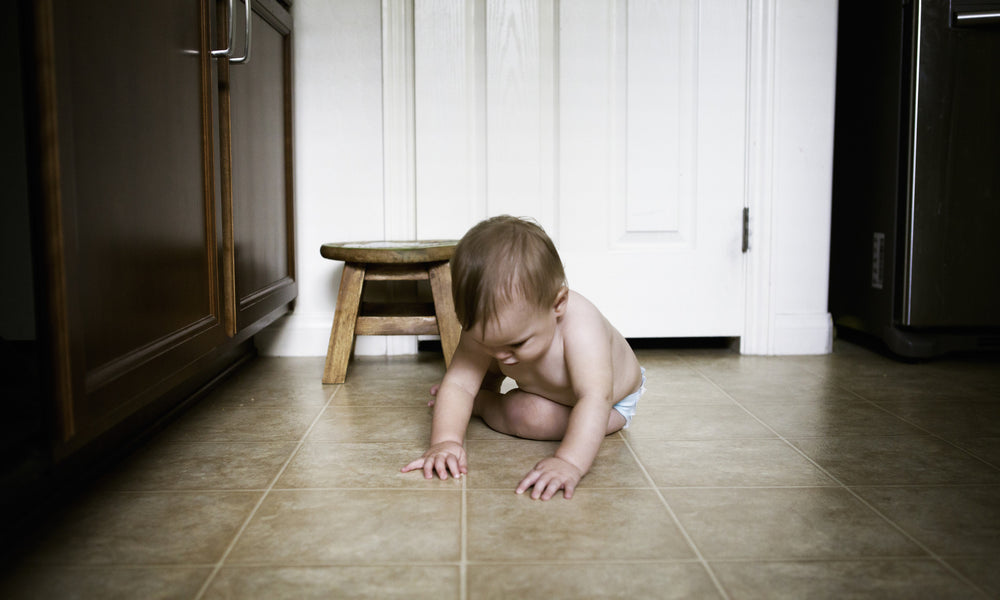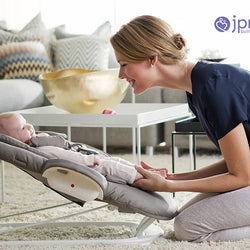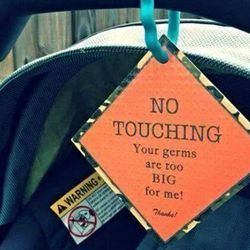Baby Proof Your Home or Home Proof Your Baby?

by Babywise.life
May 02, 2018
Far before baby ever starts to move, most parents start thinking about how to baby proof the home. But before you do, it's important for you to consider one thing: should you baby proof your home or home proof your baby?
Once your baby begins to crawl, stand and move about, it will be necessary to establish those areas and items that are off limits to his exploring hands. Will your baby understand the why behind your instruction? No, but at this point in his development he does possess the capacity to understand what “No” or “Do not touch” mean.
There is a difference between “baby proofing and “home proofing.” To “baby-proof” your home means that you will physically rearrange your living area, so your child is never placed in a situation where you would have to limit his freedom of exploration or confront him with the feared words, “No, do not touch.”
Baby-proofing advocates believe any restrictions or verbal limitations initiated by the parents towards a child, regardless of the context of such limitations, will negatively impact the child’s ability to learn in the future. Of course, this is all conjecture since there are no studies that lend support to this idea.
In contrast, “Home-proofing” your child means setting appropriate limitations on your pretoddler’s mobility, and gradually introducing freedoms when his safety is no longer the primary concern. The practice of “home-proofing” has a moral dimension as well. As your child learns to respect the items in your living room, he carries the same self-control to your neighbor’s living room and then, into society at large.
Shop
Article Continues Below Advertisement
Practical Training about Boundaries
Every child under age two lives in the world of me, myself and I. Setting boundaries begins to move his restricted view of the world from self to others, because tangible property is involved. Since this is the world he will live in for the rest of his life, you want to begin as you mean to go.
Children nearing their first birthday have a growing awareness of boundaries. If he is faced with the temptation to play with Dad’s fishing magazines on the coffee table or redirect his little hands, redirecting can win out. How can a parent move their pre-toddler to this point?
Instead of rearranging your home (baby-proofing), teach your pre-toddler which objects are free to touch and which objects are off limits. It is in a child’s nature to oppose any restrictions, but those occasions are minimized if the following reasonable steps are followed:
3 Steps to Home-Proofing Your Baby
1. Be consistent
If an item is off limits today, it needs to be off limits tomorrow. Try not to provide freedoms that you have to take away at a future date.
2. Take necessary precautions
If you have a valuable, breakable or dangerous item within your pre-toddler’s reach, move it to a safe place. Install safety latches on lower cabinets, and secure any bookcases to the wall; and place “knick-knacks” and other fragile items out of reach. It is important that parents take every precaution to make their child’s environment safe. Making your home safe for a young child is not the same thing as baby-proofing your home.
3. Limit their play areas
If your son or daughter develops a fondness for the toilet seat in the bathroom, shut the door and keep it closed. Limiting the play area spares you and your active pre-toddler unnecessary frustration.
While baby-proofing some aspects of your home is absolutely necessary for the safety of your child, pay attention to other areas where you can begin to home-proof your baby.
Read more
Article Continues Below Advertisement
-----------------------------------------------------------------
Excerpted with permission from On Becoming Babywise: Book Two by Gary Ezzo, M.A. and Robert Bucknam, M.D., copyright Parent-Wise Solutions, Inc. You can learn more and purchase the book here.
























